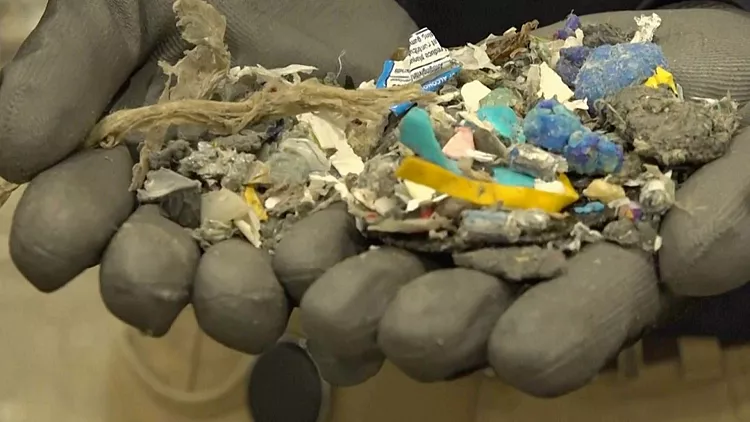
Cost of Governance is Too High – Femi-Dagunro
January 9, 2024
LIRS issues deadline for employers to submit annual Tax Returns
January 15, 2024Researchers cut their bottled water use after shocking discovery of a quarter of a million tiny plastic pieces per litre.
The average litre of bottled water has nearly a quarter of a million pieces of microplastics and tiny, invisible nanoplastics, new research has found.
These have been detected and categorised for the first time by a microscope using dual lasers.
Scientists had long figured there were lots of these microscopic plastic pieces, but until researchers at US universities Columbia and Rutgers did their calculations they never knew how many or what kind.
Looking at five samples each of three common bottled water brands, researchers found particle levels ranged from 110,000 to 400,000 per litre, averaging at around 240,000 according to a study in Monday’s Proceedings of the National Academy of Sciences.
What are nanoplastics?
Nanoplastics are particles that are less than a micron in size. There are 25,400 microns – also called micrometers because it is a millionth of a metre – in an inch. A human hair is about 83 microns wide.
Previous studies have looked at slightly bigger microplastics that range from the visible 5 millimetres, less than a quarter of an inch, to one micron. About 10 to 100 times more nanoplastics than microplastics were discovered in bottled water, the study found.
Much of the plastic seems to be coming from the bottle itself and the reverse osmosis membrane filter used to keep out other contaminants, said study lead author Naixin Qian, a Columbia physical chemist.
She wouldn’t reveal the three brands because researchers want more samples before they single out a brand and want to study more brands. Still, she said they were common and bought from US supermarket Walmart.
Are nanoplastic pieces harmful to health?
Researchers still can’t answer the big question: are nanoplastic pieces harmful to health?
“That’s currently under review. We don’t know if it’s dangerous or how dangerous,” said study co-author Phoebe Stapleton, a toxicologist at Rutgers. “We do know that they are getting into the tissues [of mammals, including people]… and the current research is looking at what they’re doing in the cells.”
The International Bottled Water Association said in a statement: “There currently is both a lack of standardised [measuring] methods and no scientific consensus on the potential health impacts of nano- and microplastic particles. Therefore, media reports about these particles in drinking water do nothing more than unnecessarily scare consumers.”
The American Chemistry Council, which represents plastics manufacturers, declined to immediately comment.
The world “is drowning under the weight of plastic pollution, with more than 430 million tonnes of plastic produced annually” and microplastics are found in the world’s oceans, food and drinking water – with some of them coming from clothing and cigarette filters – according to the United Nations Environment Programme. Efforts for a global plastics treaty continue after talks got bogged down in November.

Study’s authors are cutting their bottled water use
All four co-authors interviewed said they were cutting back on their bottled water use after they conduced the study.
Wei Min, the Columbia physical chemist who pioneered the dual laser microscope technology, said he has reduced his bottled water use by half. Stapleton said she now relies more on filtered water at her home in New Jersey.
But study co-author Beizhan Yan, a Columbia environmental chemist who increased his tap water usage, pointed out that filters themselves can be a problem by introducing plastics.
“There’s just no win,” Stapleton said.
Outside experts, who praised the study, agreed that there’s a general unease about the perils of fine plastics particles, but it’s too early to say for sure.
Credit: Euronews




